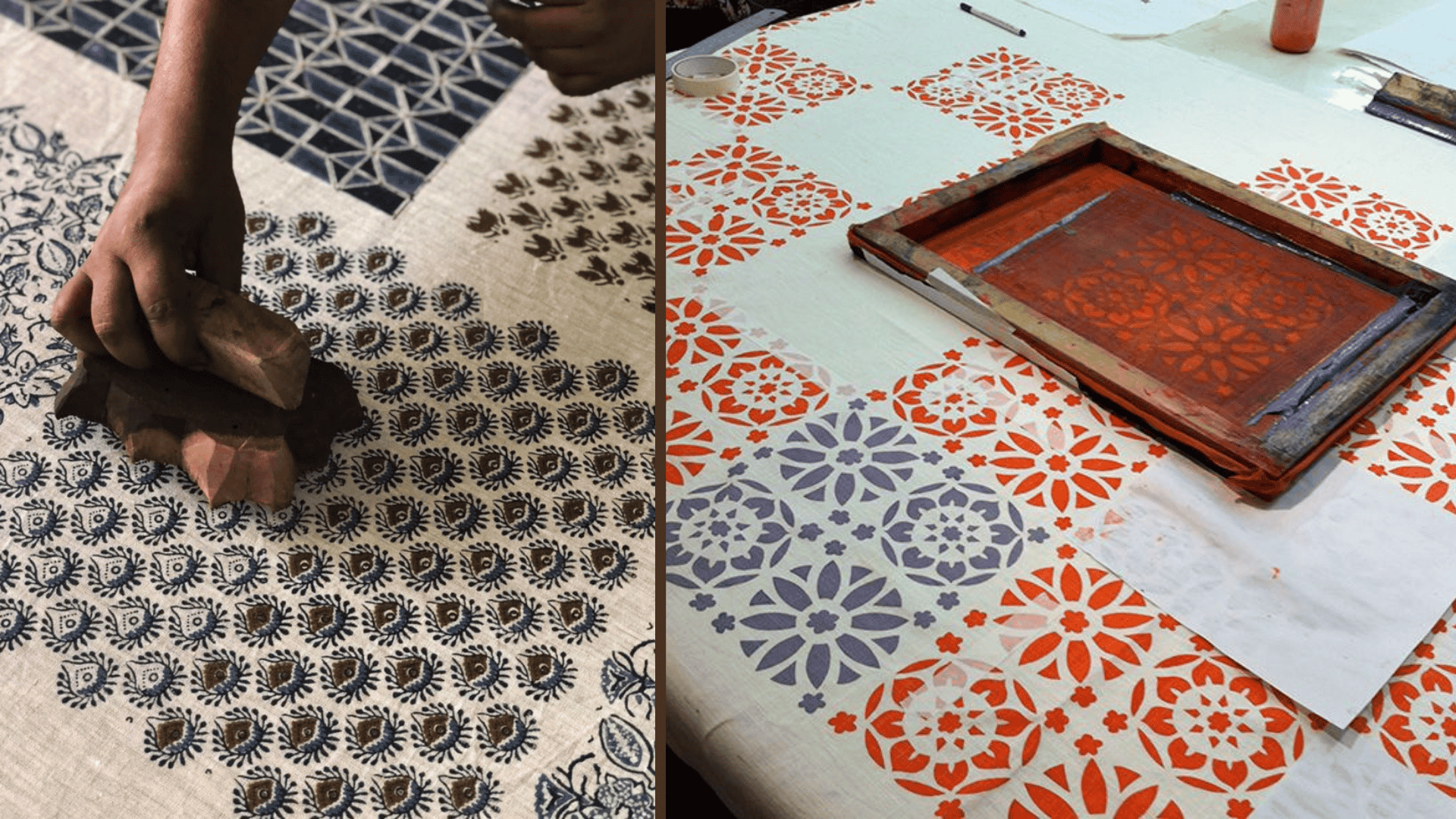
Custom Eco-Printing

In the evolving landscape of sustainable textiles, eco-friendly printing is no longer an optional add-on—it’s a core design principle.
At Anuprerna, we believe every layer of design should reflect intention—from the fiber to the finish, and from the base weave to the final printed surface. Our commitment to ethical, low-impact printing techniques brings together tradition, technology, and environmental care.
Why Ethical Printing Matters
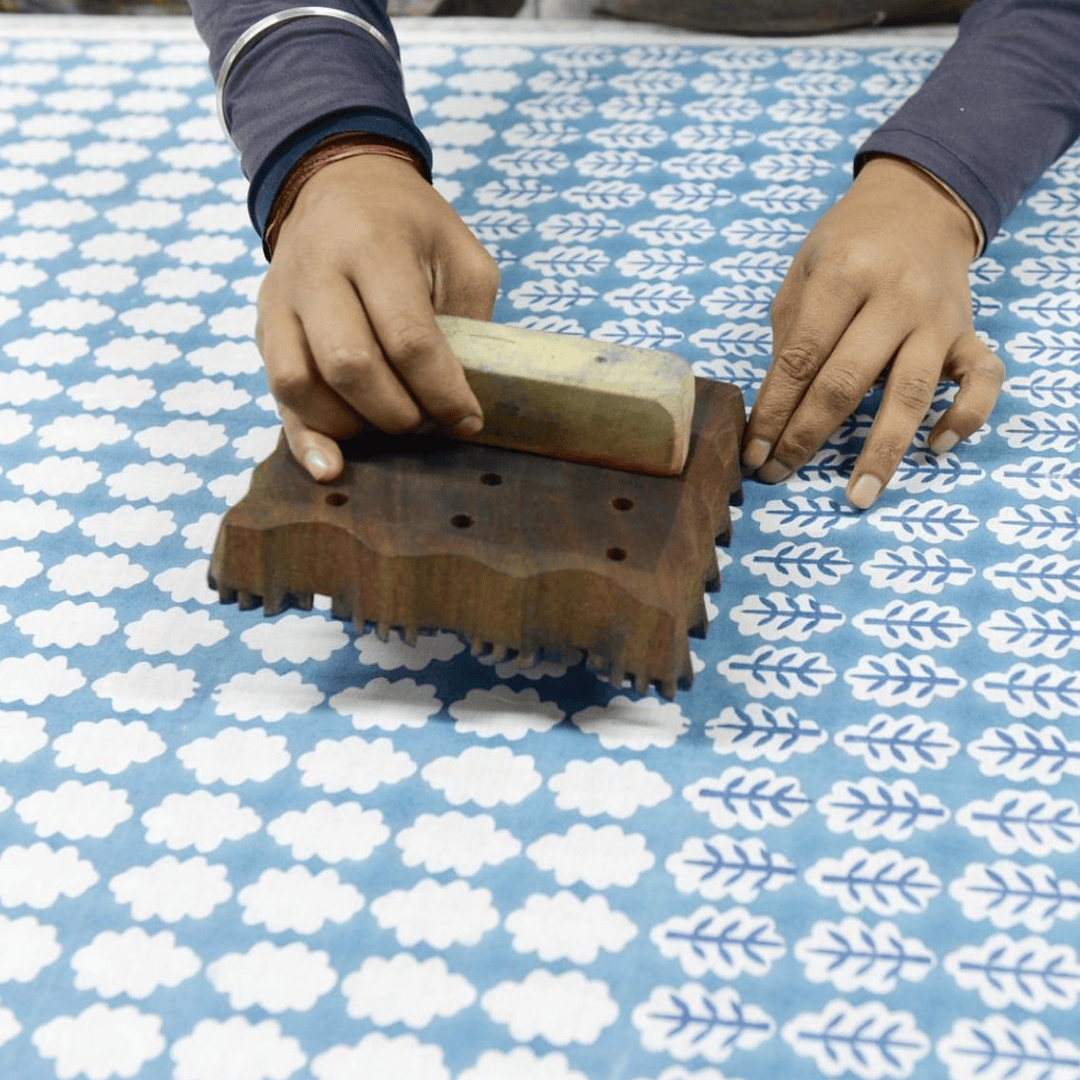
Most conventional textile printing relies on synthetic dyes, heavy metals, and resource-intensive processes.
These not only harm the planet—polluting water bodies and producing textile waste—but also compromise the health of workers and wearers alike.
Eco-friendly printing offers a conscious alternative by:
- Using azo-free, non-toxic dyes
- Reducing or eliminating water pollution
- Supporting artisan-led, manual techniques
- Extending the life and biodegradability of natural fabrics
Anuprerna’s Commitment to Ethical Printing
We offer a range of sustainable printing techniques:
- Hand Printing Techniques- Block Printing, Batik Printing
- Digital Techniques- Screen Printing, Digital Printing
All done on natural fiber bases like handwoven cotton, khadi, and silk blends. Here’s how each option contributes to conscious design.
Hand Printing Techniques:
Block Printing: We collaborate with generational block printers in Bengal and Rajasthan who work with wooden hand-carved blocks to create rich, repeat patterns.
This slow, manual process consumes significantly less energy and water while supporting traditional livelihoods.
Batik Printing: Our batik fabrics, made using the wax-resist technique, are printed and dyed by hand using natural colorants.
This method is fully artisanal, chemical-free, and produces one-of-a-kind textures and crackle patterns, ideal for slow fashion brands.
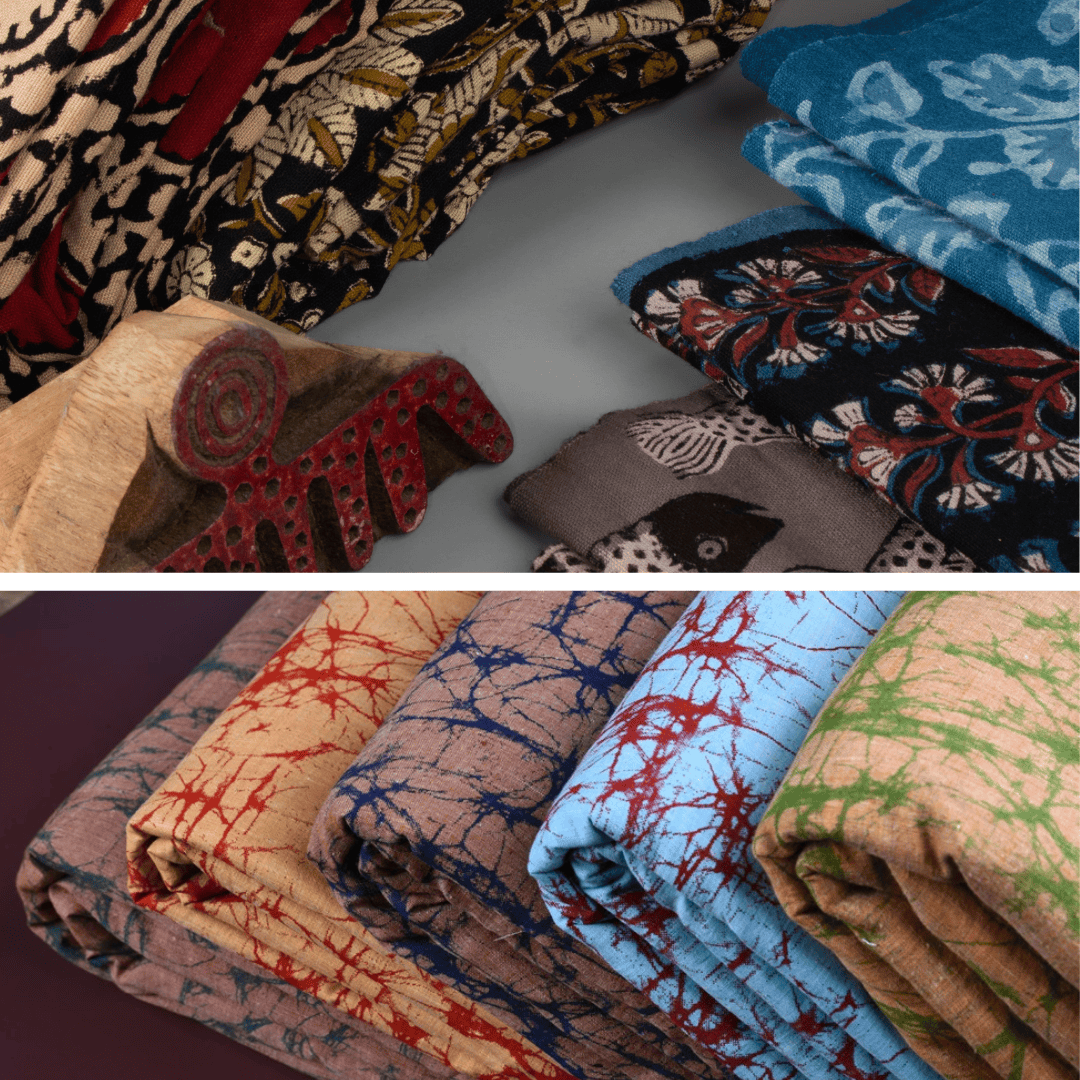
Digital Techniques:
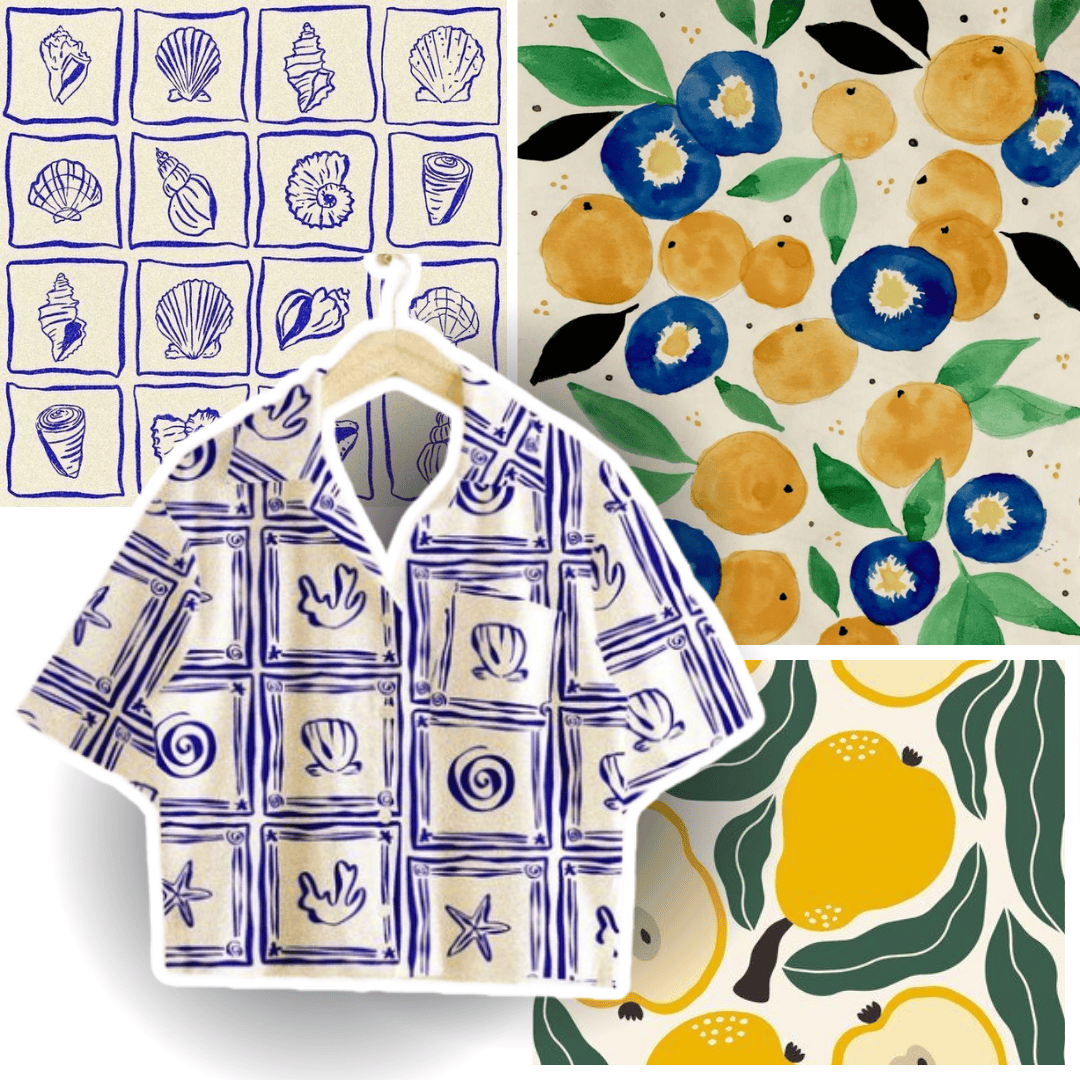
Digital Printing- Our digitally printed collections allow designers to translate artwork and brand motifs directly onto natural base fabrics like handwoven cotton or silk blends.
Screen Printing- For bolder, larger-scale designs, we offer manual screen printing using water-based inks on handwoven fabrics. This ensures consistency while maintaining our eco-standards—ideal for scaled ethical collections.
Natural & Azo-Free Pigments Only:
We use certified azo-free and low-impact dyes in all Digital to screen and block printing processes—ensuring no harmful chemicals enter artisan environments or customer closets. Our water-based pigments are safe, skin-friendly, and biodegradable.
Your Step-by-Step Guide :
Swatch & Sample Selection: Start by exploring our curated artisan fabric collections. Request swatches to feel texture, assess color, and check weight.
Order Confirmation: Once you finalize your selection and specifications (GSM, quantity, type of printing technique), place a preorder with an agreed MOQ (minimum order quantity).
Production Timeline:
Fabrics In Stock: Generally require 3–4 weeks production time.
With Customization : May take 8–10 weeks depending on complexity.
MOQ: Minimum range stating from 50 Meters
We keep you updated at every stage with progress reports and estimated shipping dates.
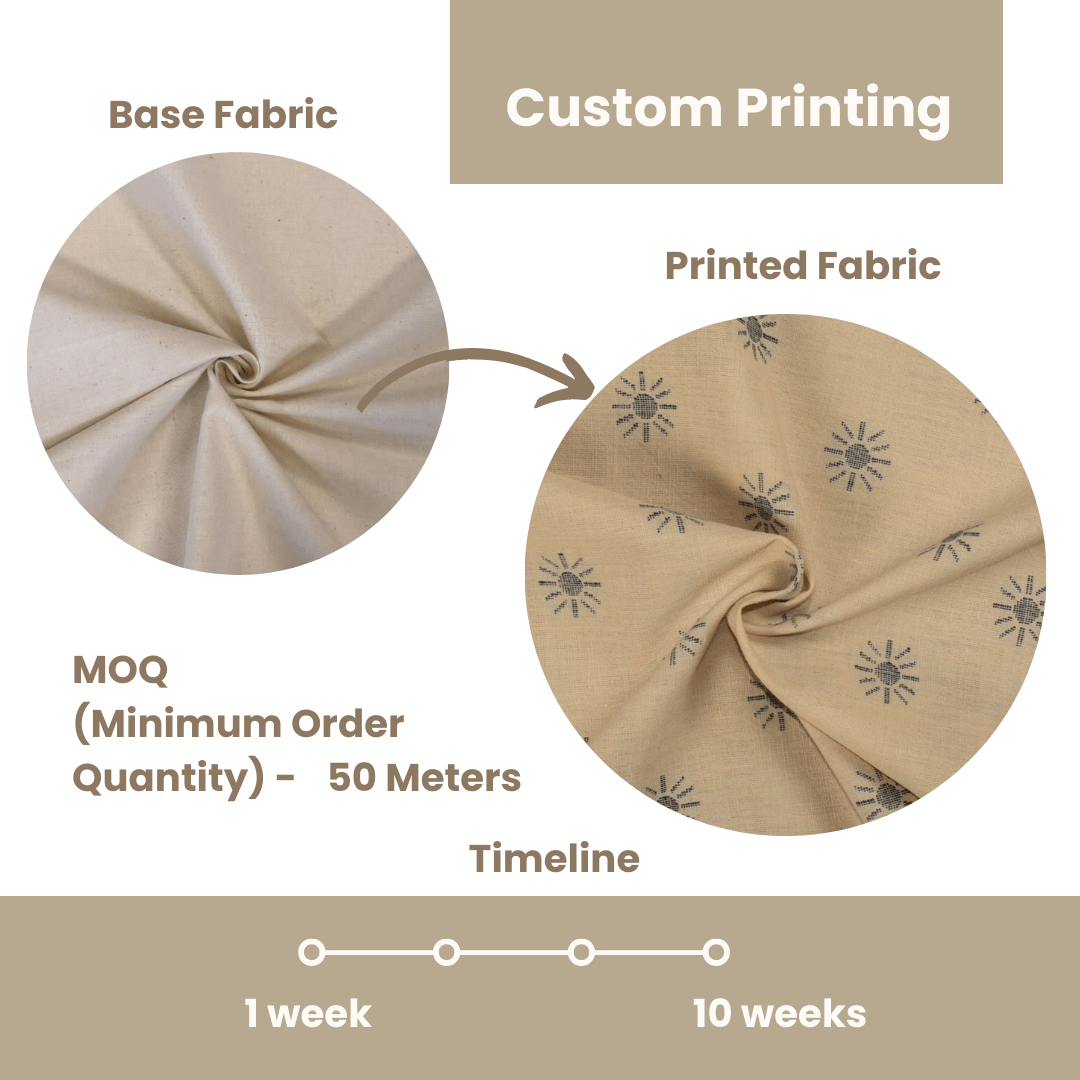
How does it work?
Step 1: Begin by choosing the specific fabric product you are interested in. Navigate to the product page and click on the "Order a Swatch" option.
Step 2: Review and Confirm Your Swatch in the Cart
Step 3: Click for Customize the fabric, where you will get a wide range of fabrics to be printed, according to you.
Then Finalize Your Order at Checkout. Complete the Process and Get Ready to Receive Your Swatch Followed by your desired Printed Fabric.
A Guide to Custom Selection:
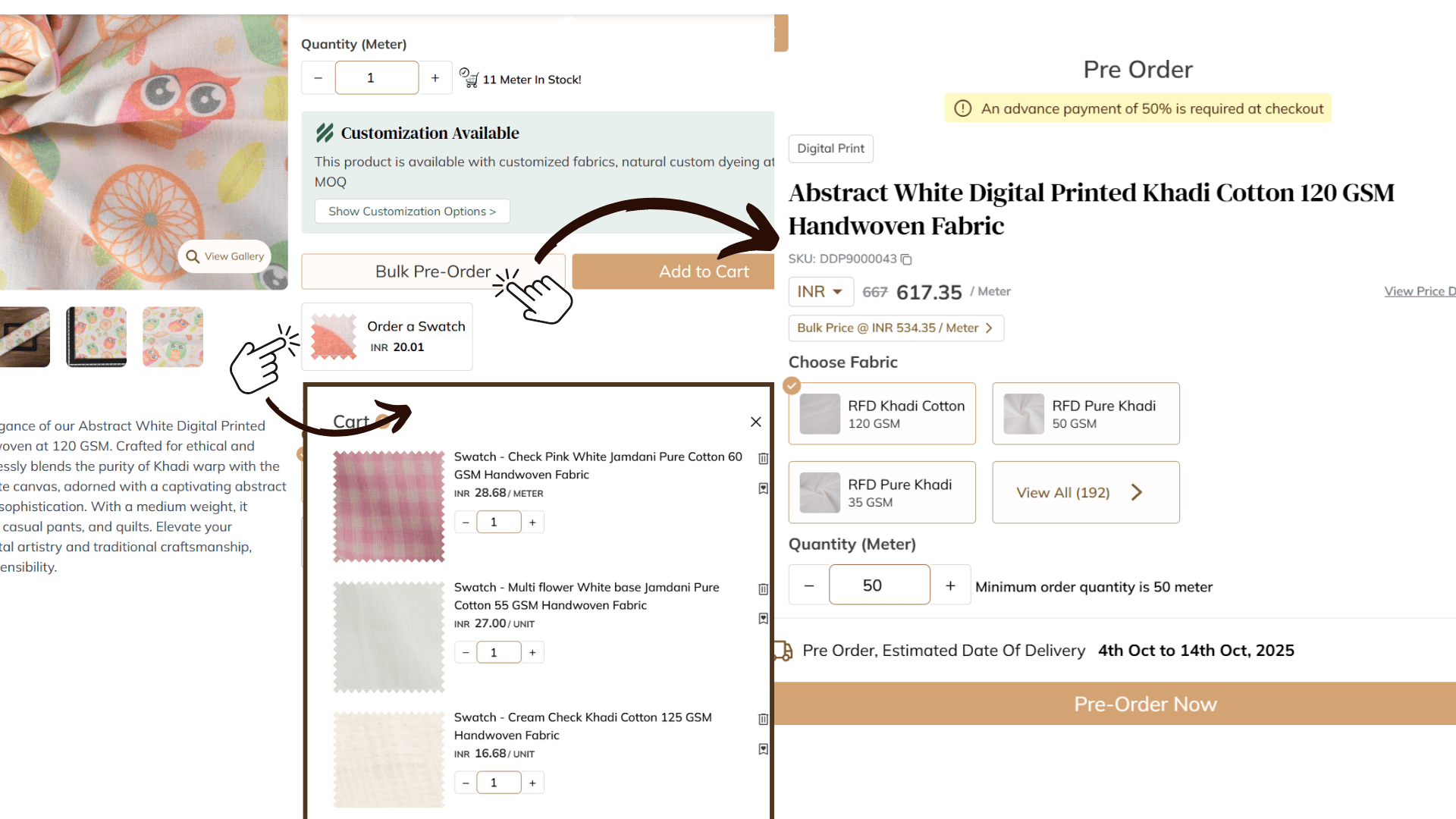
related questions
What types of eco-friendly printing techniques does Anuprerna offer?
arrow_drop_downWe offer four key techniques: Digital Printing: Low-water, high-precision prints Hand Block Printing: Artisan-made with carved wooden blocks Screen Printing: Water-based inks, suitable for bolder motifs Batik & Tie-Dye: Hand-done with natural or azo-free dyes All are done on natural fiber bases like handwoven cotton, khadi, and silk blends.
What are your minimum order quantities (MOQ) for printing?
arrow_drop_downDigital, Block, and Screen Prints: 50 meters Dyeing (Natural, Azo-free, Tie-dye): 12 meters Low MOQs allow you to create small-batch or capsule collections sustainably.
How do your printing methods ensure sustainability?
arrow_drop_downOur practices minimize environmental impact by: Using azo-free, non-toxic, or natural dyes Reducing water waste, especially in digital and hand block processes Empowering artisan communities through fair, transparent production Avoiding synthetic fabrics or harsh chemicals
Are your prints safe for sensitive skin or children's products?
arrow_drop_downYes. All printing is done on natural fabrics using non-toxic dyes—making them ideal for skin-safe fashion, kidswear, and wellness products.
More Blogs
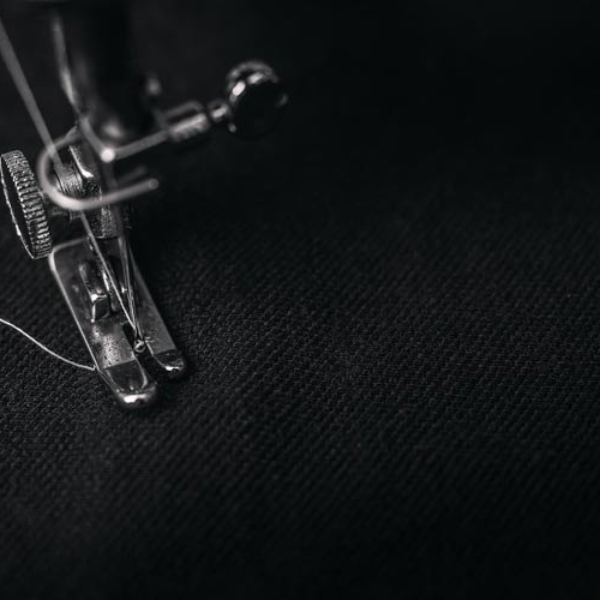
custom clothing, accessories, & homewares

wholesale production & preorder

order fabric swatches
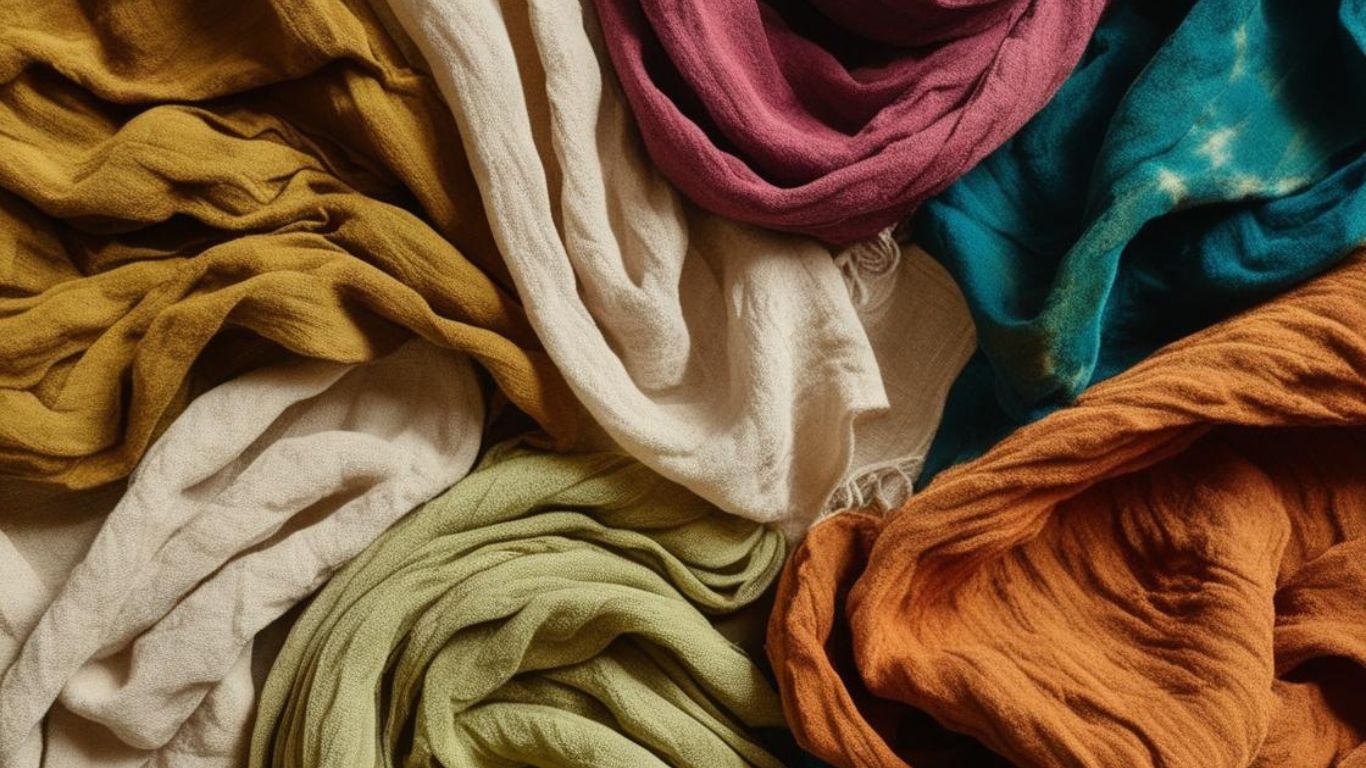
natural sustainable custom dyeing

custom clothing, accessories, & homewares






